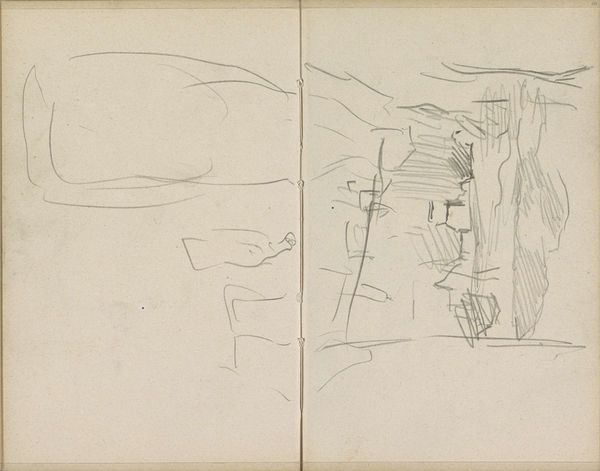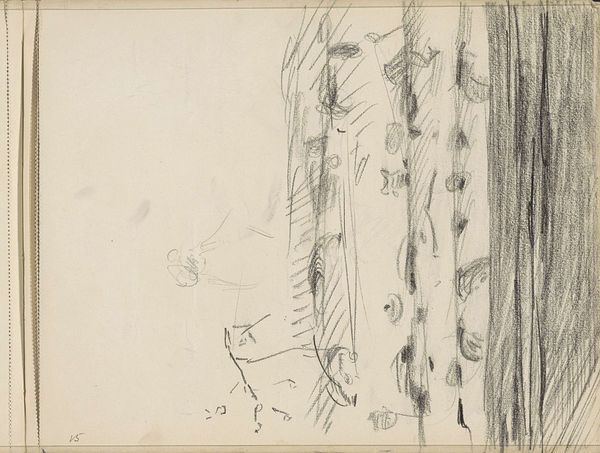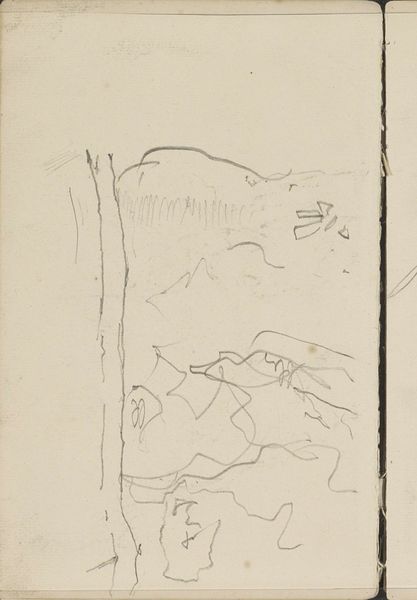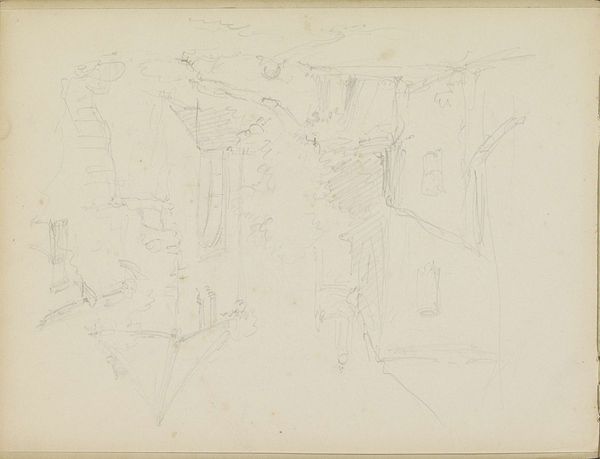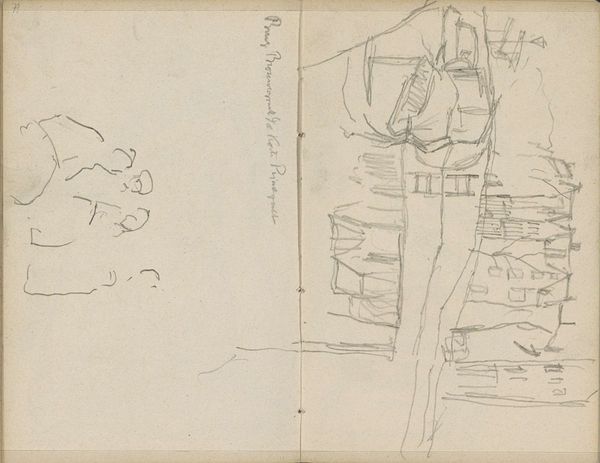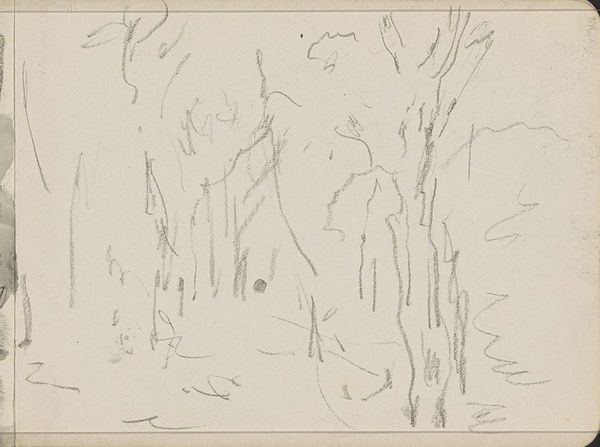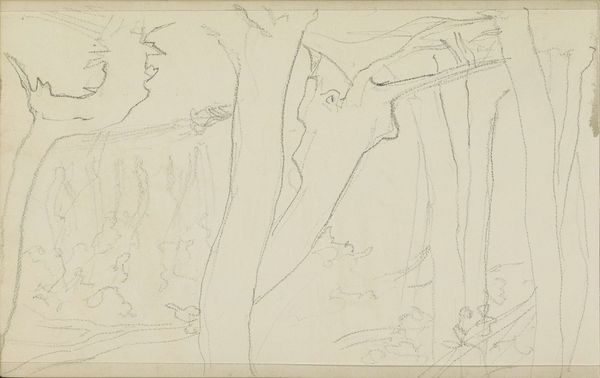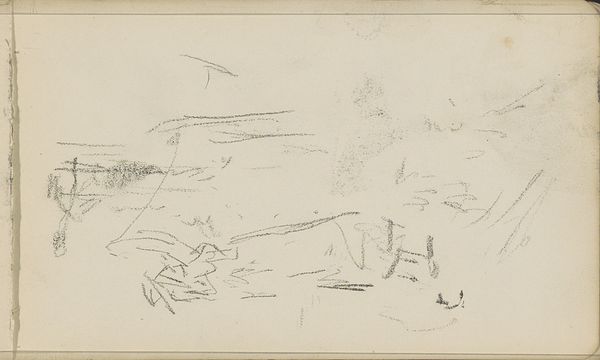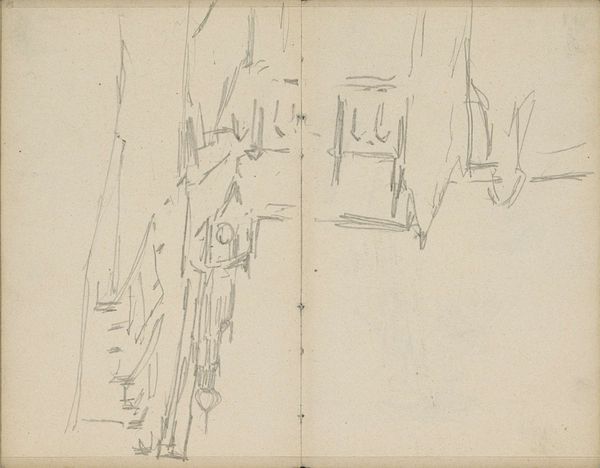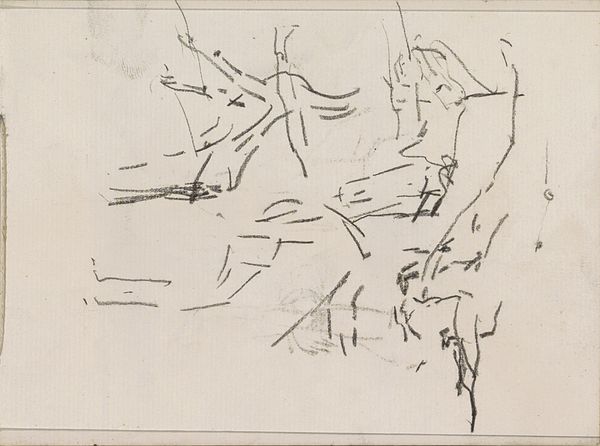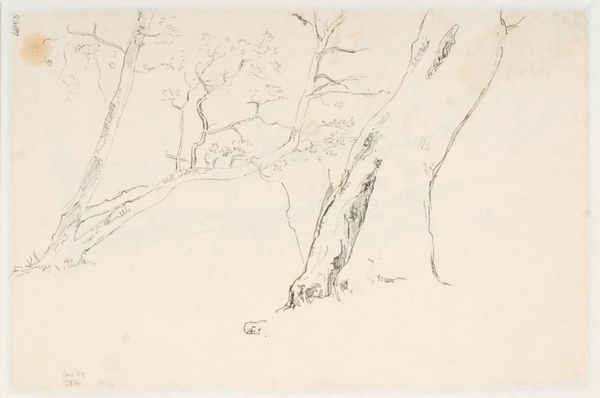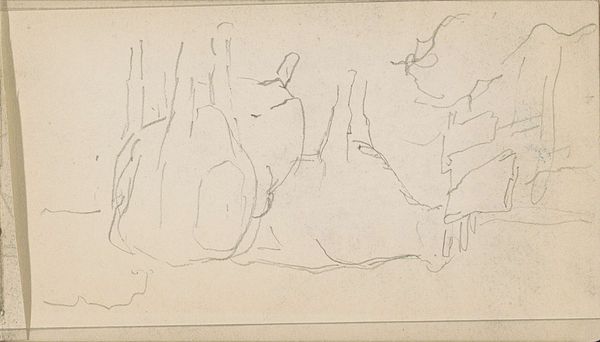
Copyright: Rijks Museum: Open Domain
Curator: What we have here is a graphite drawing on paper, titled “Gezicht in Amsterdam met een wolkenlucht,” or “View in Amsterdam with a Cloudy Sky,” attributed to George Hendrik Breitner and likely created between 1886 and 1903. Editor: Well, that's a very economical application of graphite! It's gestural, almost like shorthand for a city. I find it immediately evocative, even melancholy, despite the sketch-like quality. Curator: Precisely. The very sparseness directs our attention to the relationships between positive and negative space. The composition becomes a study in implied form. Notice how Breitner uses the barest of lines to suggest the bustling dynamism of Amsterdam. The high horizon line further emphasizes the atmospheric quality of the "cloudy sky" hinted at in the title. Editor: Yet, even in these minimal marks, one can intuit the labor—the artist choosing a viewpoint, applying the graphite, layering the strokes. Breitner had to select paper tough enough for erasing and reworking too. The paper's inherent qualities of receptivity to the mark is quite vital here. I feel this lends an honesty and immediacy to the final piece. It presents labor rather transparently, as if there is a correlation between quick work and immediacy. Curator: True, the speed is implicit. But to push further, this isn't merely a spontaneous sketch. There's a conscious deployment of line quality here. The thickness, the varying pressure, are all deliberate choices shaping our reading of the subject, regardless of the time invested to reach a final product. These contribute to an understanding of the work that far transcends the circumstances that surrounds it. Editor: But that denies the significance of production. Breitner witnessed and recorded Amsterdam changing rapidly, documenting laborers and everyday scenes. His choice of materials—easily portable paper and graphite— speaks to an artistic intention of being 'on the ground,' of direct, immediate engagement with the social realities around him. Curator: I see your point, but ultimately, my focus remains on the carefully modulated interplay between light and shadow and their creation. To deny such intent is, in itself, negligent. Editor: Perhaps. It's true, that one can be left to appreciate the elegance in a single line in his landscape. I am struck though, by how that elegance seems born from the pragmatic demands of rapidly capturing the modernizing world around him. Curator: An intriguing convergence of interpretations, indeed!
Comments
No comments
Be the first to comment and join the conversation on the ultimate creative platform.
